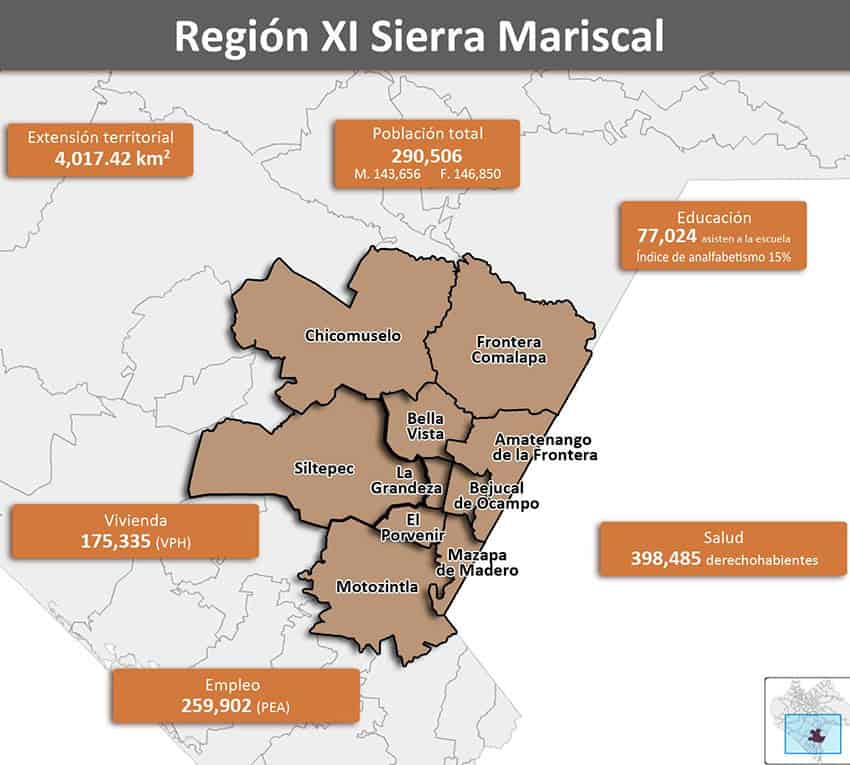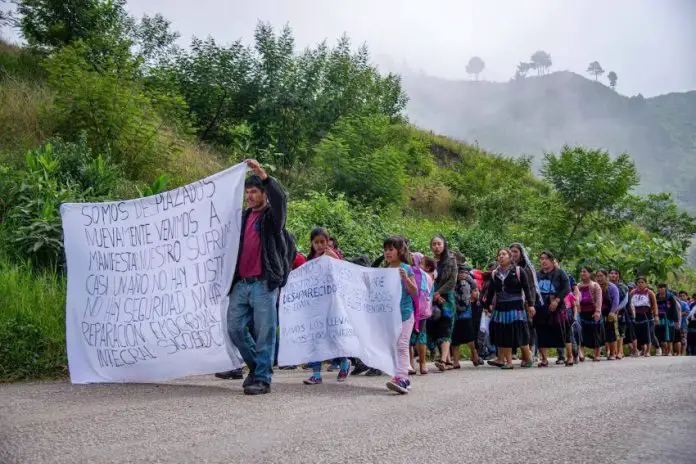Hundreds of Mexican families fleeing cartel violence in Mexico’s southern state of Chiapas have sought refuge across the border in Guatemala, Guatemalan President Bernardo Arévalo confirmed Wednesday.
Reports indicate that more than 500 men, women, children and elderly people crossed into Guatemala from Chiapas, settling in communities within the border state of Huehuetenango.
#Chiapas: Así se cruzan convoy de camionetas esta noche en la región de la Sierra y la Frontera. Reportan enfrentamientos en AMATENANGO DE LA FRONTERA. Familias enteras han quedado atrapados en el fuego cruzado. Esta noche es la pesadilla más larga en mucho tiempo que viven… pic.twitter.com/9EzmwS2Zja
— Isaín Mandujano (@isain) July 25, 2024
Footage posted by Mexican journalist Isaín Mandujano, reportedly showing a convoy of trucks manned by criminal groups in the Chiapas border region of Sierra Mariscal, just west of Guatemala, on Wednesday night. According to Mudujano, there had also been reports of drone attacks on the area. (Isaín Muandujano/X)
Major Ann Marie Argueta of Guatemala’s Ministry of National Defense said that approximately 180 displaced individuals are being sheltered in a community within the Guatemalan municipality of Cuilco.
Mexican refugees have arrived in at least two other communities, according to media reports. Their number totals approximately 580 people, according to Guatemala’s Executive Secretariat of the National Coordinator for Disaster Reduction (CONRED).
The agency and other institutions have been providing shelter, food, medicine and other care. At least one school was being used as a shelter.
The exodus comes as violent clashes between the Sinaloa Cartel and the Jalisco New Generation Cartel (CJNG) continue unabated in Chiapas’ southern, mountainous areas. Locals say the latest round of violence between the two largest criminal gangs in Mexico, and their local offshoots, dates back approximately three years.
According to the digital media outlet Chiapas Paralelo, a criminal group arrived Tuesday in the Chiapas town of San José de los Pozos — located in the municipality of Amatenango de la Frontera. The group evicted all the town’s inhabitants.
They “had to flee with the little they had on them,” Chiapas Paralelo noted. “They left behind their looted houses, their backyard animals, their crops, and many of them could not even [take] their vehicles.”

According to CONRED, the refugees then began the long walk to Cuilco, situated just over 30 kilometers from the Chiapas border. Some ended up in two other Cuilco villages — Perla Escondida and El Oaxaqueño.
Guatemala’s Human Rights Ombudsman’s office and its Army estimated the number of displaced Mexicans at around 300, but CONRED put the number at around 580.
“Unfortunately, we are presenting a risk situation for the Guatemalan population,” Huehuetenango Governor Elsa Hernández said. She called on Guatemala’s citizens, NGOs and other institutions to provide humanitarian support, adding, according to Chiapas Parelelo.
“Unfortunately, the Mexican authorities have not taken any action to protect their citizens,” Hernández added.
Mexican authorities had yet to officially comment on the displacement as of Thursday, leaving the exact number of refugees uncertain. However, the Mexican newspaper La Jornada reported Thursday that Chiapas state security ministry officials had told its reporters that they had received no reports of displaced individuals in that area.
President Arévalo, speaking on Wednesday at the opening of a hospital in another part of the country, emphasized the dire circumstances and violence driving the Mexican citizens’ displacements. Guatemala, he added, is mobilizing resources to provide assistance through its Ministry of Defense and through local authorities, as well as deploying its military to provide augmented security in the zone.
The situation in Chiapas has deteriorated significantly due to cartel disputes over drug trafficking routes, a situation that has exacerbated poverty and violence in Indigenous communities.
Underscoring the precarious conditions faced by the fleeing Mexican families, a 91-year-old diabetic woman died en route to Guatemala due to lack of medication, her fellow travelers told La Jornada. Luckier was the situation of a boy who had been recovering from a recent surgery in his Chiapas community: La Jornada reported that he was receiving postoperative care in Guatemala.
The exodus, while dramatic in its suddenness and in the number of refugees, marks a continuation of migration trends from southern Mexico into Guatemala since early 2024.
Recent incidents, including a public display of bodies in Chiapas, have highlighted the brutal tactics employed by the criminal organizations involved.
With reports from La Jornada, Infobae, Chiapas Paralelo and El Universal
